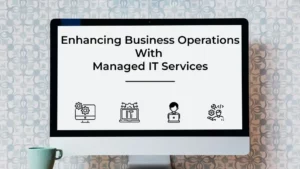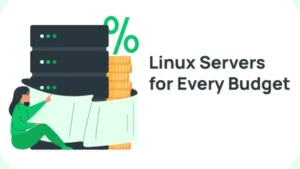It’s always a good idea to build your application for your specific platform. For many today, that means building a Cloud Ready Application. Making sure your application architecture is designed specifically for the cloud will ensure you face fewer problems along the way, but it can also become a challenge in itself.
If you want to create a cloud ready application, there are many steps you should take in order to ensure success the first time around. Yes, it’s true just about any application created today can be cloud-based. However, there are unique developmental steps that have to facilitate this if you want a cloud-ready application that can grow with your project needs.
What’s different with cloud-ready architecture compared to traditional architecture? Because the application and its components will be hosted on virtual resources instead of an on-site resource, these resources will be assigned differently. They’ll need to be distributed over a wide-area network (WAN) instead of locally. You’ll also need to manage the resources to ensure the application user doesn’t have access to public cloud information.
Now that you know what’s different, you need to also recognize what makes an application “cloud-ready.” According to Kyle Brown and Mike Capern of IBM, “an application is cloud-ready if it can be effectively deployed into either a public or private cloud.” In other words, your app needs to be able to take advantage of all the platform-as-a-service (PaaS) capabilities of its host.
This isn’t as ground-breaking as it seems. In fact, you don’t have to leave all of your existing tools behind to create your cloud-ready applications. The key is to keep the most essential steps and rules in mind to make the most of the implementation process.
Migrating to a cloud environment has never been easier—or more necessary. Thanks to rapidly changing consumer demands, developers need to be on their toes and always improving. That’s right; there’s no room for getting comfortable. Cloud technology makes scaling easier and more affordable, so it’s no longer optional in today’s world.
Table of Contents
Cloud Ready Application Architecture vs. Cloud-Native
First, we need to address the elephant in the room. There’s a difference between Cloud Ready Application architecture and cloud-native architecture, and this difference is pretty significant. A cloud-native application is any project that was written to run on a public cloud. These were originally built with a container-based deployment.
Cloud-native applications use Agile software development to always churn new iterations. You’ll see a lot of reliance on cloud services such as object storage or queuing systems. This is a lot different than cloud-ready, which is what we’re talking about here.
As outlined above, Cloud Ready Application is when you transform classic enterprise applications so they can function on the cloud. While they’ll likely never be able to take advantage of every service offered by public clouds (that’s something only cloud-native can do), there are still a lot of benefits of making the transition.
The limiting factor in this situation isn’t the code. It’s actually the deployment mechanics. Enterprise applications are classically multi-tier, and this makes them challenging to match with cloud-native which has horizontal auto-scaling built into the original design. This is why it’s so important to examine how your application is currently being deployed. If it’s already equipped with a set of scripts to automate the installation of updates, it will be much easier to transform it into cloud-ready.
Now that you understand what it means to create a Cloud Ready Application architecture for your app, let’s discuss the 5 steps to follow when making the transition.
1. Consider the Effects of Scaling Cloud Ready Application
It’s not easy to change your programming environment to a cloud-based one. It’s a drastic change, and it requires many fundamental changes if you want to avoid running into problems when it’s time to scale.
Scaling is one of the many perks of using a cloud platform. Virtual applications are easy to build and update. However, if you code your app with a specific topology, you’ll run into problems quickly. Dynamic scaling can wreak havoc if you don’t prepare now. Approach every new project like you’re only in the earliest of stages.
The best strategy is to develop your app as generically as possible. This way it’s much more efficient to develop regular updates and keep your app as collaborative as possible, not only now but also into the future.
2. Break Processing and Data Apart of Cloud Ready Application
One common mistake that bogs down apps are the practice of coupling data to your application. While this might be fine in other circumstances, when you’re designing a cloud-ready app, you’ll need to keep processing and data as separate components.
Most public and private clouds want this data and processing separate. It’s also significantly safer, especially if you’re storing sensitive information. More importantly, your app will run much better because there isn’t any additional data storage weighing it down.
In today’s age, you can’t afford an app that is slow, unreliable, and not responsive to your users. With cloud architecture, it’s essential to decouple your data if you want your app to perform at its highest all the time.
3. Keep Your Cloud Ready Application Logs Accessible
No application is 100 percent safe and free from error. This isn’t a fault of your developers, it’s just the reality of technology. Do not write your logs into the local file system. If you do this and experience a problem, it’s much more of a challenge to access these logs. How are those local logs going to help if you experience a full application crash?
Don’t lose your valuable data. Logs are the trail of breadcrumbs that lead you back to your problems before you even know a problem exists. Instead of storing files locally, use a log aggregator from a third party. Whether you use an open-source aggregator or a commercial aggregator, keep your scala server and infrastructure monitoring accessible to your development team no matter what happens.
There are a lot of perks to utilizing these log frameworks. You can filter the information you want to see, and you can keep track of your log files on your cloud storage. The best way to prevent a problem from happening in the first place is to use an aggregator to stay up to date on real-time changes.
4. Cloud Ready Application Security Comes First
Yes, security is technically fourth on this list, but it should always come first for developers. You can’t scroll through your newsfeed today without seeing another report of yet another mobile app development company data breach. Every day cyber-attacks become more common. You don’t want your app to be just another statistic.
The data in your app needs to be encrypted. Because it’s flowing between systems, it’s more vulnerable. Create a system to store and protect this information.
Your Cloud Ready Application security should be based on your enterprise security. Even if you’re not fully in the cloud just yet, be consistent with your approach to app security in the development stages and beyond. Create clear security specifications and hold your DevOps automation to these standards. Finally, educate yourself about the security regulations and compliance terms in your own industry. These can vary widely.
5. Create a Strategy for Moving Data from Cloud Ready Application
Finally, you’ll need to consider how you’ll move your Cloud Ready Application data into the cloud. If you prepare sufficiently during these prior steps, it will be a simple process. Of course, this will all depend on how much data you’re moving. If you don’t have much data, it’s as simple as copying this data over an internet connection.
For larger workloads, you might need to compress the data prior to sending. If it’s exceptionally large, you might need to ship physical drives to your cloud provider. Your provider can give specific instructions about the best moving practices.
However, make sure your application by app development companies is portable once it’s in the drive. You don’t want your provider to “lock in” your application with them alone. Metadata is often specific to a single platform, so you’ll need to keep this portable as well. Finally, proceed with a final testing strategy, ideally one that’s automated. That’s it, you’re in the cloud!
Cloud Ready Application: Conclusion
There are a lot of things to pay attention to when you’re transitioning from traditional development to Cloud Ready Application architecture. Yes, you might make mistakes along the way. However, as long as you’re learning and growing with your technology, you’re creating more effective strategies.
Investing in cloud technology opens your projects to a world of benefits. You’re now able to scale quickly and effectively. However, you’ll need to be up to the challenge of making a secure and stable transition using the steps above. It’s not easy, but it’s more than worth it.
Read more: How to Promote Confidently Your Mobile Application




